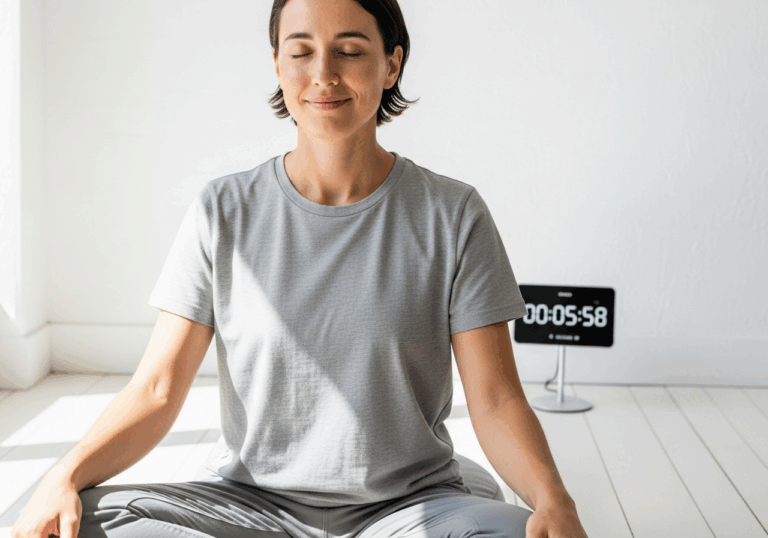Science-Backed Tips
Boost Mood with Resonance Breathing
30% reduction in depressive symptoms for socially active older adults
📊 Did you know?
💡 Why It Matters
1️⃣
Improving depressive symptoms by 30% can enhance overall quality of life for older adults.
2️⃣
Socially active individuals may experience greater physiological benefits from mood-enhancing interventions.
3️⃣
Targeted breathing exercises can be a cost-effective strategy for mental health improvement in aging populations.
✅ Try These Micro-Tips
🎯
Engage in resonance breathing exercises for 20 minutes, 3 times a week.
🎯
Participate in social activities at least once a week to enhance mood benefits.
🎯
Track your mood and HRV before and after breathing sessions to monitor progress.
🎯
Consider joining a community group focused on wellness to increase social interaction.
📚 The study
❓ Frequently Asked Questions ❓
Learn more
What is resonance breathing training?
Resonance breathing training involves controlled breathing exercises designed to enhance heart rate variability (HRV) and improve emotional well-being. It typically consists of specific breathing patterns practiced over a period of time to promote relaxation and mood uplift.
How does resonance breathing training affect depressive symptoms in older adults?
Research indicates that resonance breathing training can reduce depressive symptoms by approximately 30% in older adults. This improvement is particularly significant for those who are socially active.
What is heart rate variability (HRV) and why is it important?
Heart rate variability (HRV) refers to the variation in time intervals between heartbeats and is an indicator of autonomic nervous system function. Higher HRV is associated with better emotional regulation and overall health.
Why do socially active individuals experience greater benefits from resonance breathing?
Socially active individuals may experience enhanced physiological benefits from mood-enhancing interventions due to the synergy between social engagement and autonomic function. This connection can amplify the positive effects of practices like resonance breathing.
How often should older adults practice resonance breathing exercises?
Older adults are encouraged to engage in resonance breathing exercises for 20 minutes, three times a week. Consistent practice can lead to improved mood and overall well-being.
What role does social engagement play in improving mood?
Social engagement is crucial for enhancing mood and can amplify the benefits of mental health interventions. Participating in social activities at least once a week can significantly contribute to mood improvement.
How can older adults track their progress with resonance breathing?
Older adults can monitor their mood and HRV before and after breathing sessions to assess their progress. Keeping a journal or using health tracking apps can help visualize improvements over time.
Are there any community resources for older adults to improve their well-being?
Joining a community group focused on wellness can provide older adults with opportunities for social interaction and support. These groups often offer activities that promote both physical and mental health.
Is resonance breathing training a cost-effective strategy for mental health improvement?
Yes, resonance breathing training is considered a cost-effective strategy for improving mental health in aging populations. It requires minimal resources and can be practiced independently or in group settings.
What are the overall benefits of reducing depressive symptoms in older adults?
Reducing depressive symptoms by approximately 30% can significantly enhance the overall quality of life for older adults. Improved mood can lead to better social interactions, increased physical activity, and greater life satisfaction.





